We’re always up for a race day, especially if it involves one of the UK’s greatest circuits and some fantastic 1950s metal. So, when Charles Clegg, Jeremy Hindle, and Nathalia Rus from Custodian invited us to the VSCC's Silverstone Spring Start meeting to watch Charles’ first outing in his newly-acquired AC Bristol single-seater, we jumped at the chance to enjoy some classic racing and learn more about their potentially game-changing platform.

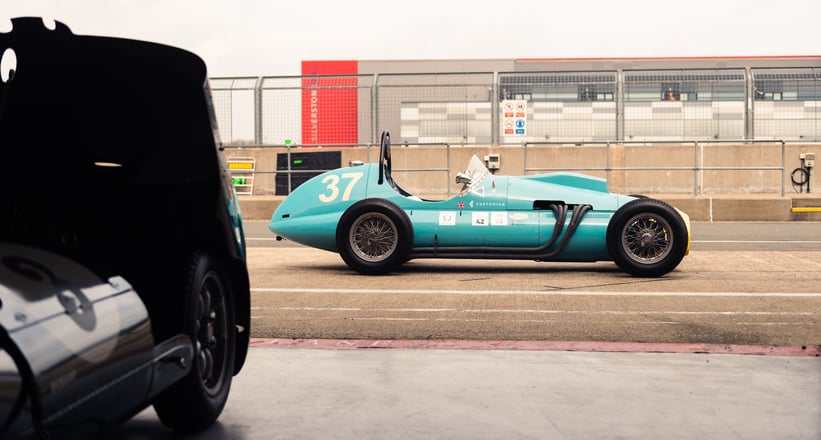

Charles, let’s start with your lovely tow car. How did it enter your collection and how long have you had it?
Charles: My obsession with classic Range Rovers really started as a kid. My dad had an LSE, which is the long-wheelbase variety like my tow car. Growing up, I spent a lot of time in the back seat of that car, so it left a big imprint on my psyche. I’ve had a couple of them now. Three years ago I bought the current one I own and I used it as my everyday car in London. Then ULEZ charges were introduced in London, so it got relegated from my daily to towing duties, but it’s still a great car. The LSEs are the best, they’ve got the 4.2 litre engine and there’s so much extra legroom in the back it’s like being in a limo. I just think there’s nothing cooler than the shape of a Classic Range Rover.
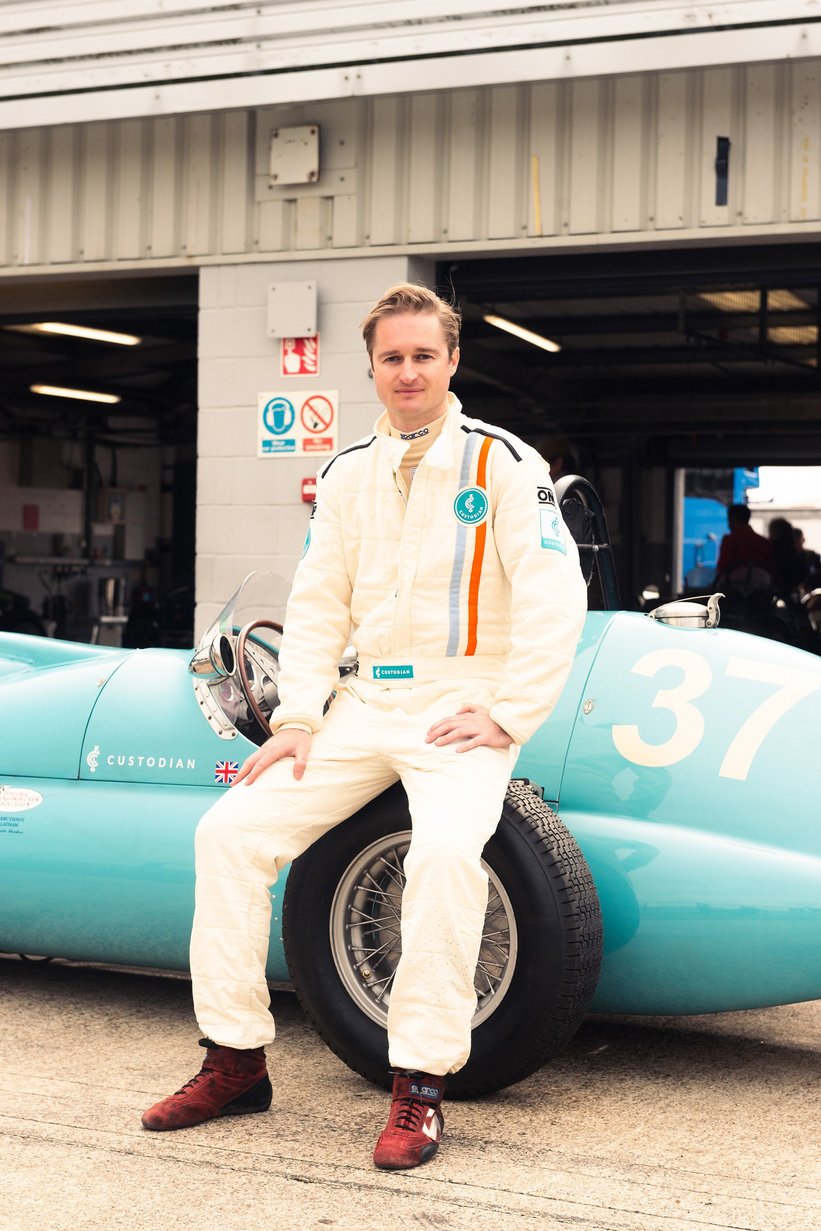

Moving on to the star of the show, your lovely AC Bristol. What appeals to you about this era of motorsport and how did you become this particular car’s current custodian?
Charles: The 1950s is one of my favourite eras of motor racing, both the grand prix cars — the single-seaters — and the sports racing cars. There was some amazing engineering, but also a real purity of design. The single seaters were almost cigar shaped. It was before they fully understood aerodynamics and downforce, like they did in the 1970s and 1980s with the introduction of wings and ground effects.


As for the AC itself, what drew me to it was the Bristol 2-litre engine. Its history goes back to the Austin Seven engine (licenced in Germany as the BMW Dixi), which ended up evolving into the pre-war BMW 328 engine; a very successful car before WW2. Then, after the war as part of war reparations, Bristol got the rights to the engine and developed it further. That’s the fantastic power plant in my AC Bristol. It’s a 2-litre six cylinder, it sounds great, especially on straight pipes! You particularly notice that in a single seater as there’s no insulation or sound deadening, it’s just so raw. When you’re coming out of Woodcote flying down the old Silverstone start-finish straight with this great engine purring away, nothing between you and other cars ontrack, with the exhaust note echoing off the pit wall, it’s a pretty exhilarating experience.
Being able to see your front wheels also means you can very precisely position them on track. You can see literally to the centimetre how far away you are from the apex of a corner. It’s a much more visceral experience than in a sports car or GT car; you’re a lot more exposed too, so you’re very much a part of the vehicle. It brings a lot of excitement you don’t get with a closed racing car.


So, you’ve just used your classic Range Rover to tow your AC Bristol to a race at Silverstone, where would Custodian come into the equation and how does it make owning these cars a more pleasurable experience?
Charles: Owning any specialist car is pretty difficult. If you’ve owned one of these cars for a long period of time, you probably have a good handle on how to look after it. Now, problems arise if you don’t have experience with the vehicle or if you’ve just bought it, like with this AC Bristol at Silverstone. There’s a huge amount of admin around owning one of these specialist cars.
For example, if James (who restored my AC Bristol) hadn’t been with me, I definitely wouldn’t have felt comfortable running it at Silverstone on my own. Using Custodian, I can jot down things like tyre pressures, which oils to run, starting procedures, the rev ranges, servicing intervals of different items, and even the best lines to take on track. All this data, which would be in the head of the previous owner or mechanic, needs to be put into a format that makes this information usable further down the line, not just for myself but for future owners. That’s really what we’re trying to do with Custodian: simplifying the ownership experience.
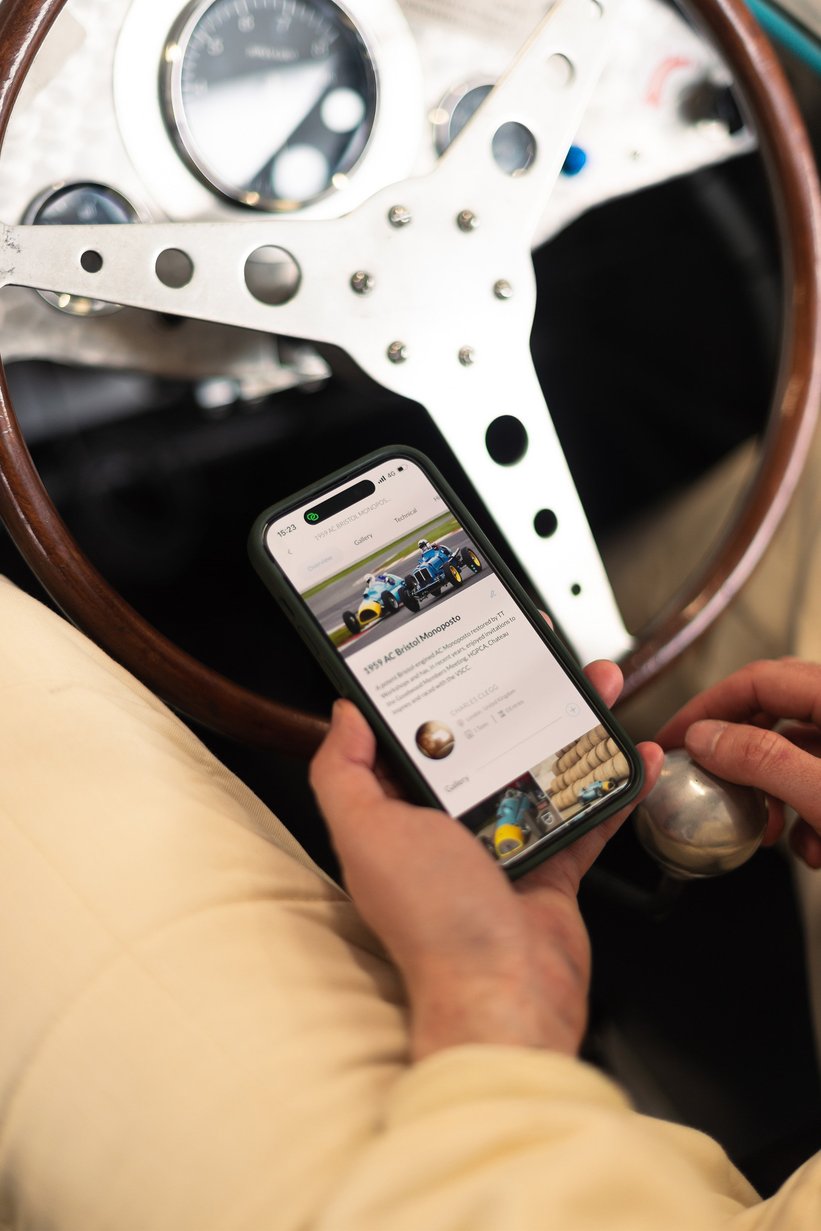
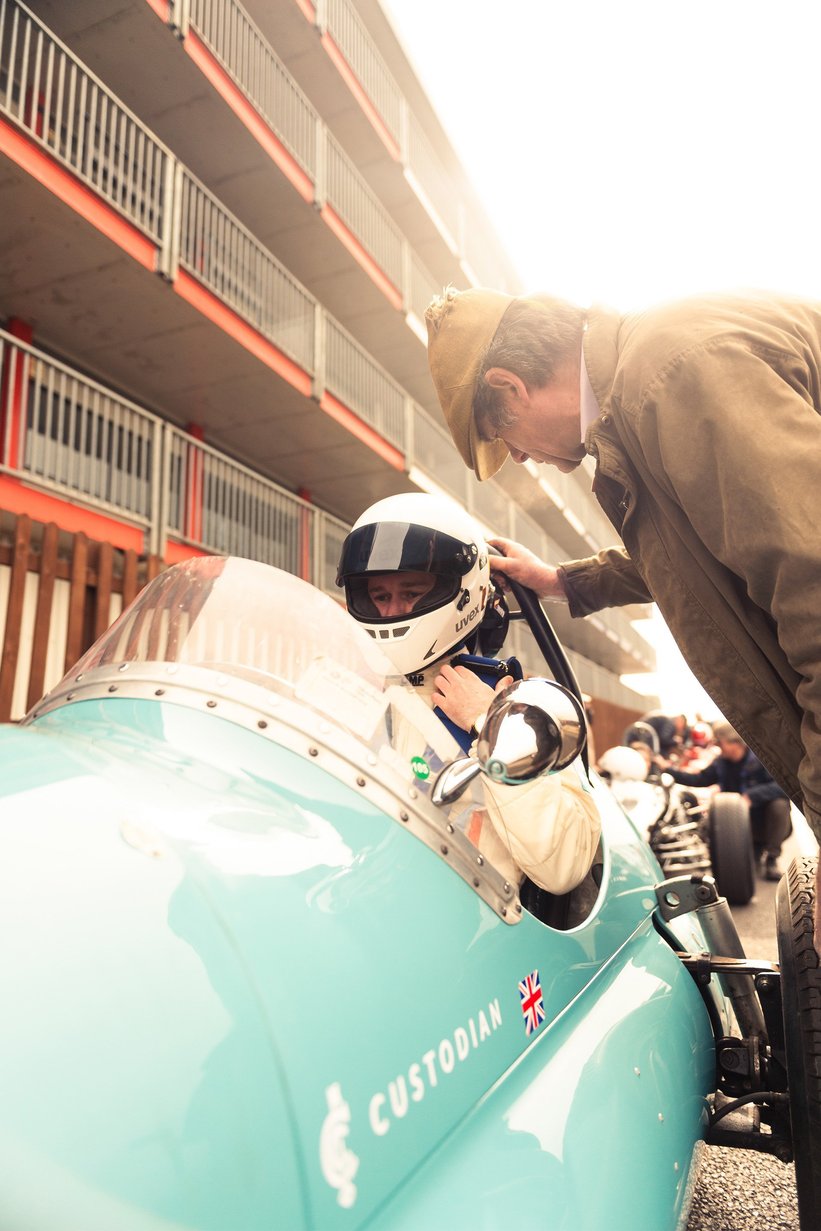
We talk about the ‘eight pains of ownership’: (1) maintenance and servicing, (2) tax, (3) logistics and storage, (4) regulation and bureaucracy, (5) provenance and authenticity, (6) acquisition and sales, (7) financing, and (8) insurance. At the moment, there’s no effective technology for addressing these eight pains.
Without digitising this intangible knowledge which is in the collective community, it’s going to be very hard to look after these cars going forward. For instance, how many people will know how to rebuild the 1950s 2-litre engine in the AC Bristol in twenty, thirty, or even one hundred years time? Unless it’s put into a digital format to guarantee its longevity, that knowledge could literally disappear.


Jeremy, could you tell me a bit more about the technology behind the app? What was the hardest aspect around integrating old-school machinery with 21st century software?
Jeremy: Weirdly it wasn’t the technology, but rather making sure we built something that’s easy and enjoyable to use for as many people in the industry as possible. We have a very large and broad demographic of car enthusiasts on Custodian. You have people who like rally cars, race cars, supercars, and on top of that, there’s the underlying love people have for normal cars due to sentimental reasons. I look back at the Peugeot 205 I grew up with as one of the most special cars ever. It’s really about making sure the experience all these demographics get is consistent and easy enough to understand that they can really utilise and benefit from Custodian. I think we’ve done a good job in making sure the platform is approachable to less technically-minded individuals.
Nathalia: The way we built the platform — even though it’s a tool for management — means the vibe is really built around the community. The features we put in place in the app, such as seeing photos of your car with your family or on a road trip, may not enhance the value of your car, but we want to cultivate the emotional stories around these cars as well.
We also have the car handover functionality coming soon with the Showroom, as it’s important to us to recreate that emotional feeling of handing over custodianship of a car to a new owner in an online environment.
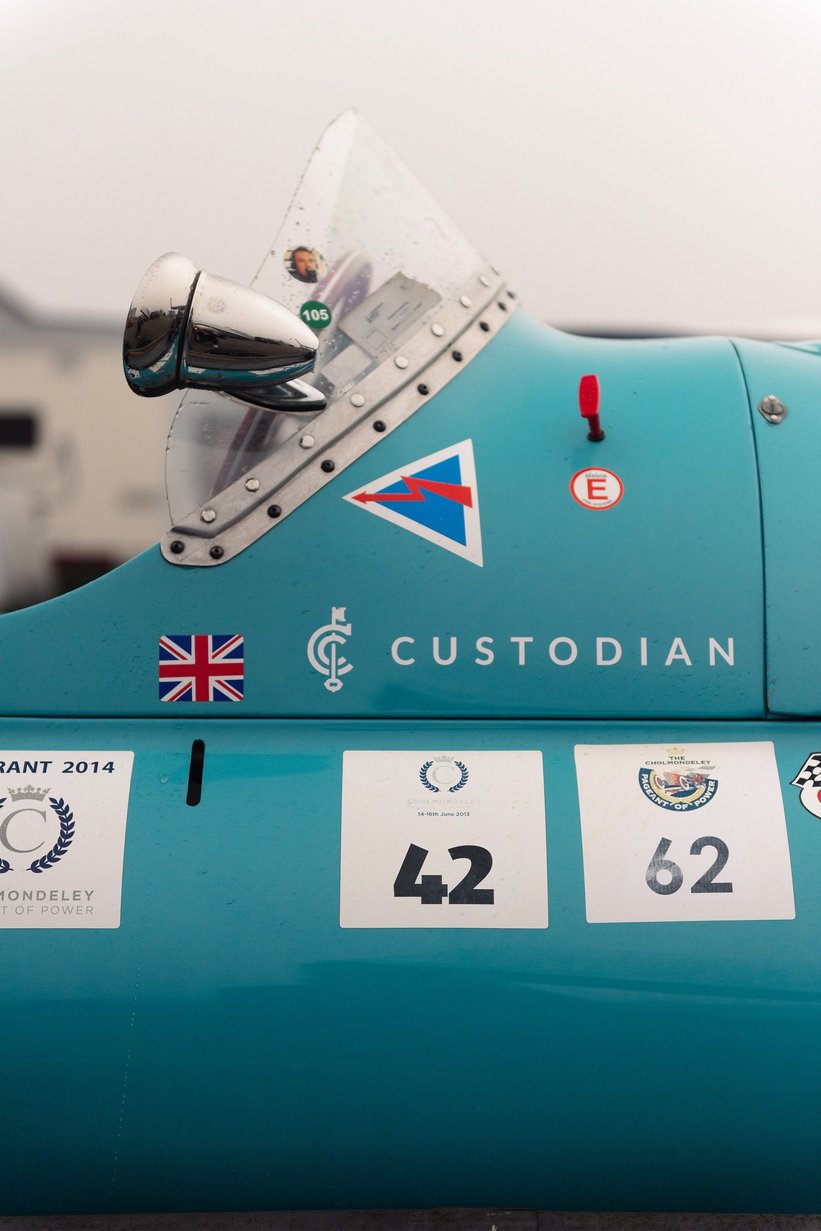

Jeremy: We had to think very carefully about what information is sent over to a new user, and we didn’t want it just to be a list of boxes to check. When you buy a car normally, you’ll talk to the previous owner about the quirks of ownership. We’re building our system so, when you do the digital handover, it takes you through a chronological story of your car, which allows you to reminisce on all the good times you had with your vehicle while selecting which information to share with the new owner.
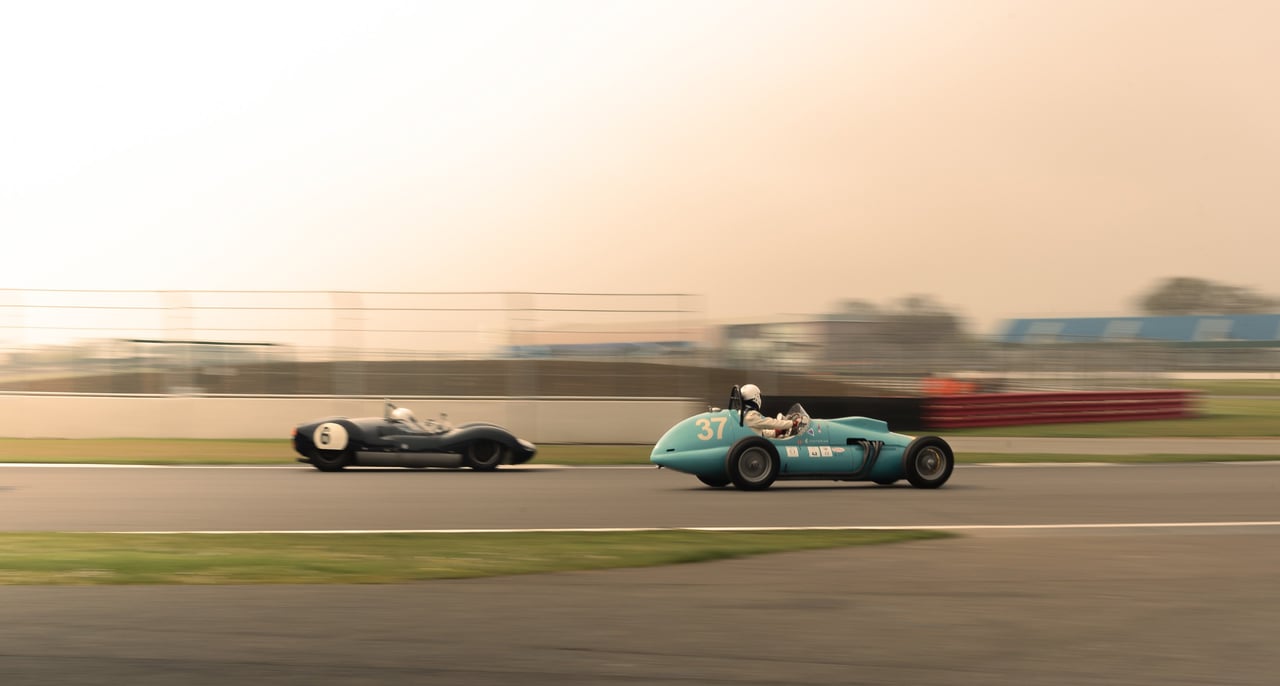
Could you tell me more about the insurance platform you’re about to integrate into Custodian’s list of services?
Charles: Our whole ethos around Custodian was that it has to be a value-add service to our users. One of the pains of ownership is insurance — no one likes it, but it’s incredibly important. At the moment, it’s largely phone call driven for classic cars, there’s not much transparency, and it’s time consuming to add, remove, or change a car from your policy, especially if you have a particularly specialist car. We’re providing a digital insurance service that takes advantage of all the information you’ve already provided on Custodian to streamline that data transfer process. For example, if you’ve got modifications we’ll have a record of that, so we can share that with our underwriters without requiring our customer to re-enter the information.
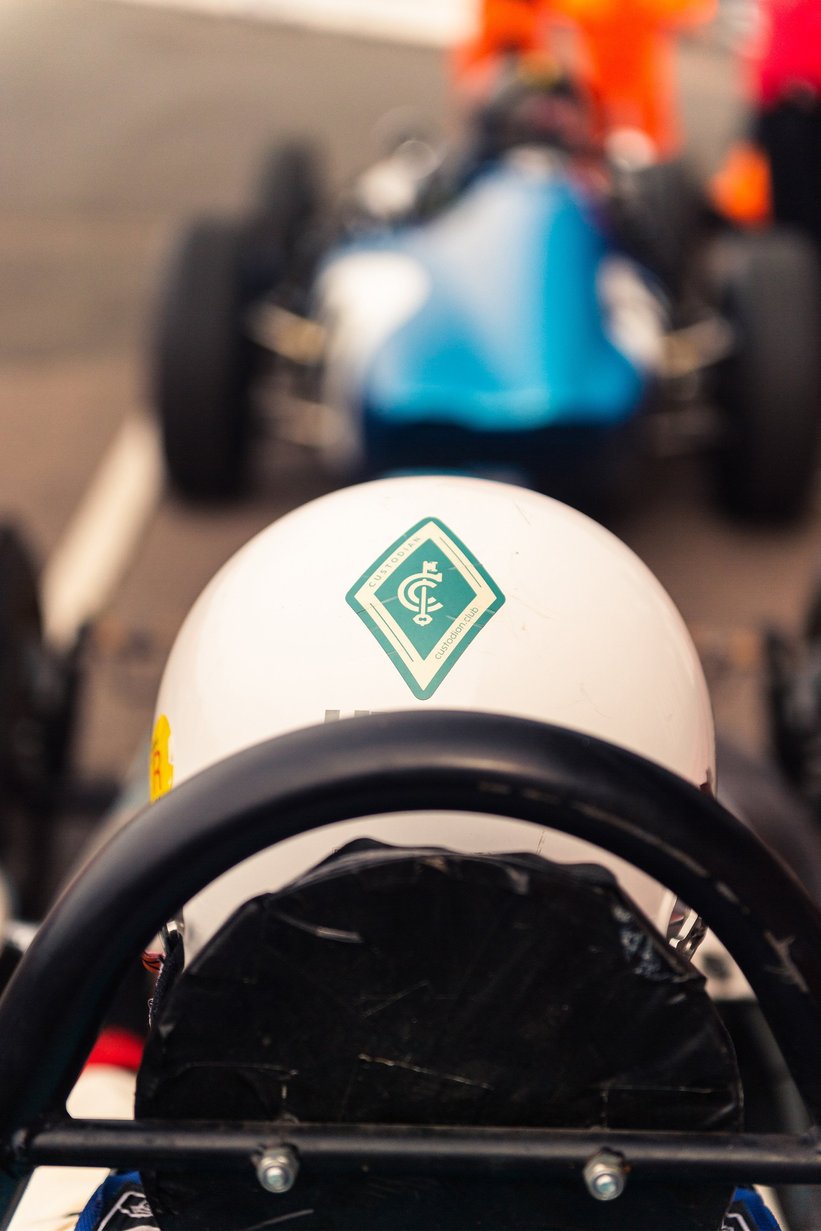
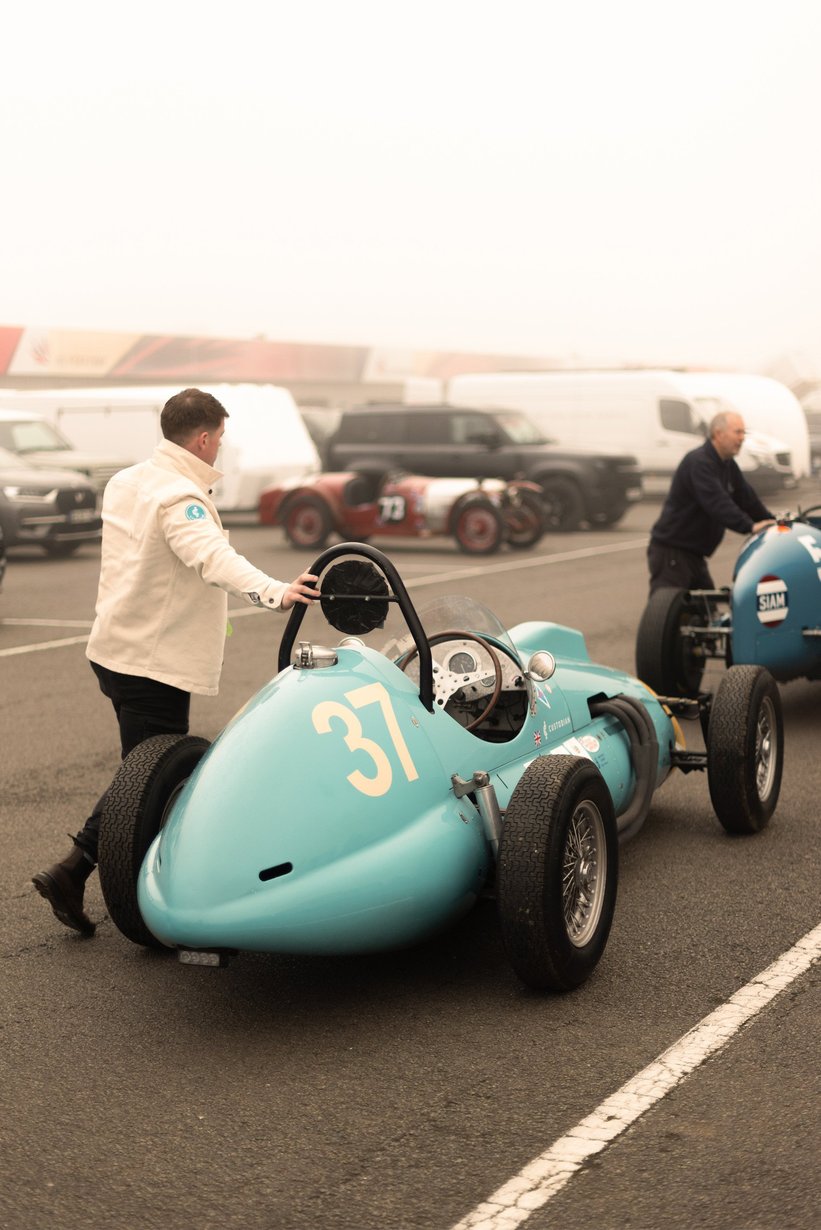
The nice thing from the underwriters and our users’ perspectives is because we can see information about how you care for your car on Custodian, we can get a sense for whether you’re a good custodian and reward you with cheaper insurance. At the moment, it’s impossible for these manual brokers to know if you’re a good custodian or not. They can’t see that your car is in pristine condition, that you care for it, that you go to events, or that this car is a very important part of your life.
Jeremy: Modifications are a very interesting example, because every car person knows they will probably increase your premium, even if they actually increase the safety of your vehicle and reduce your likelihood of crashing, which should lower your premium. Once we have enough data, we will be able to identify genuine custodianship and lobby underwriters in order to get better pricing for these people.
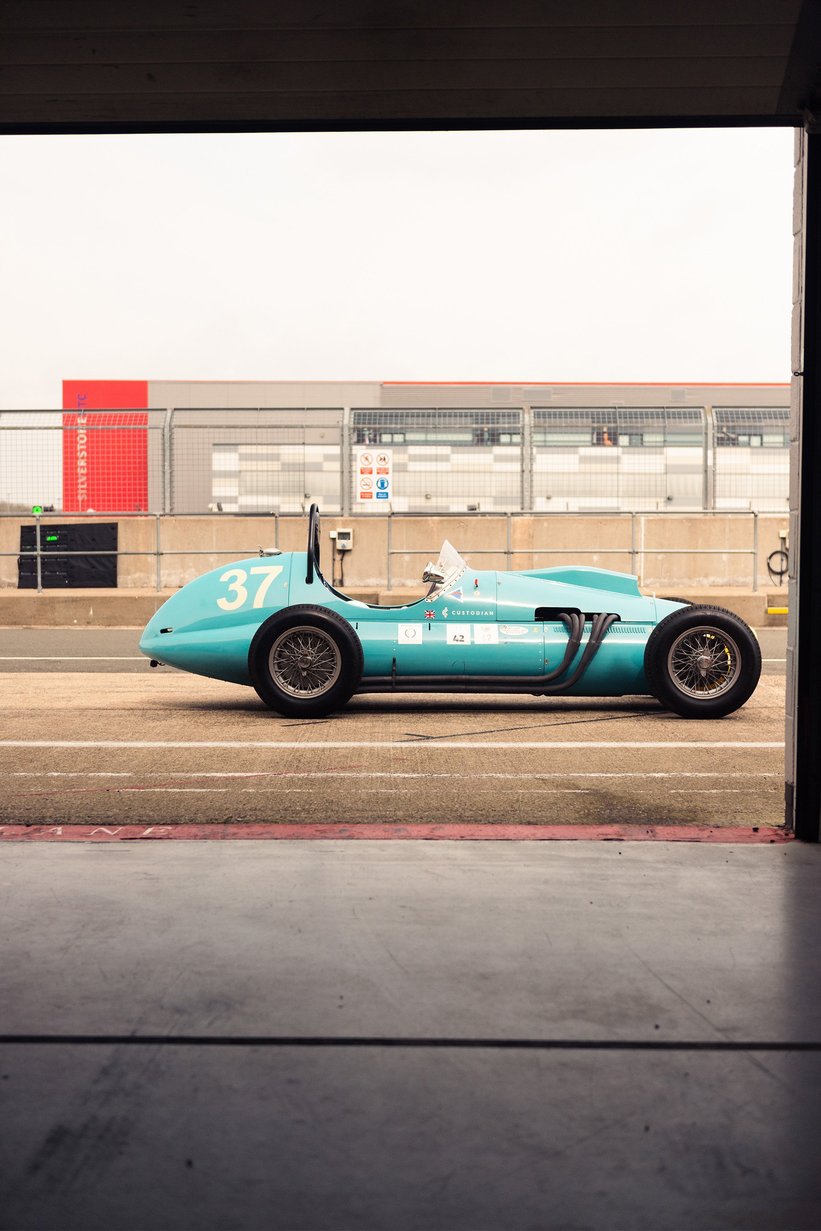

Typically, when you’re acquainting yourself with a classic or collector car, you need to trawl through (usually ancient) online forums to find information. Do you think Custodian will replace these forums as the go-to source of information?
Charles: Our view is that the data you get from Googling and searching forums is not always correct. In a lot of these forums, the person who is most active — not necessarily the person who is most knowledgeable or correct — has the loudest voice.
Let’s say you buy a Jaguar XK120, but you have no experience owning one. Using Custodian, you’ll be able to see all the XK120s people have decided to share on the app; you’ll be able to see which service providers they use, which companies have done restoration work, and where they’ve had engines tuned. You’ll be able to look at the most valuable XK120 on the market, or the one that has won the most awards, and see all the information from that vehicle’s digital profile. That’s a level of transparency you don’t get currently on the internet. This collective database of knowledge is something that the whole community will benefit from.
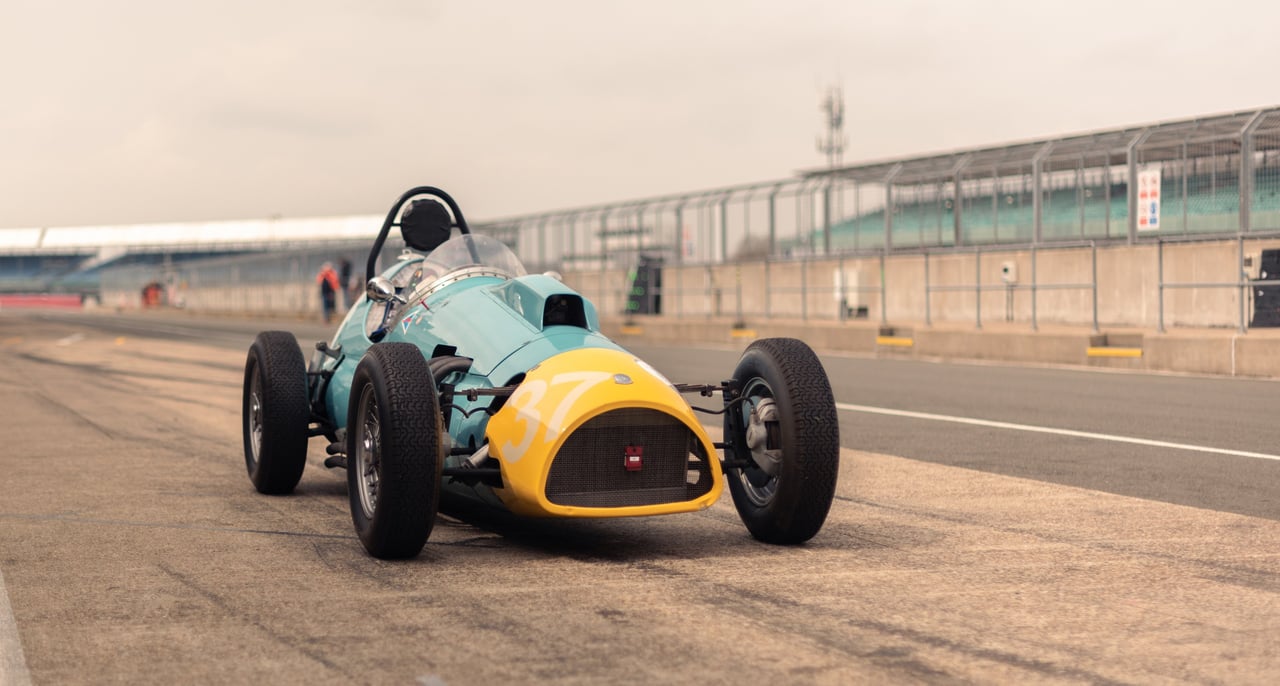
The collector car world often feels like an insider’s club, and if you don’t know the right people, you risk being overcharged for work that might not live up to your expectations. Do you think Custodian could solve that issue?
Jeremy: It becomes very obvious who the truly passionate people are in the industry. As you just said, it really is a club, and it’s who you know. There are people in the industry who actively don’t want us to do what we’re doing, simply because their livelihood or reputation is based on what they don’t share, and their ability to be the middleman.
However, the people who really understand how important it is to get first-time buyers in the market right now are very bullish and understand that things need to change. At the moment, the limiting factor is knowledge.
Nathalia: I have a lot of friends who have enough money and enthusiasm to become a classic car owner. The desire is there, but they just don’t know how to take care of these cars. They are dying to get involved and would definitely buy them if they knew how it worked.
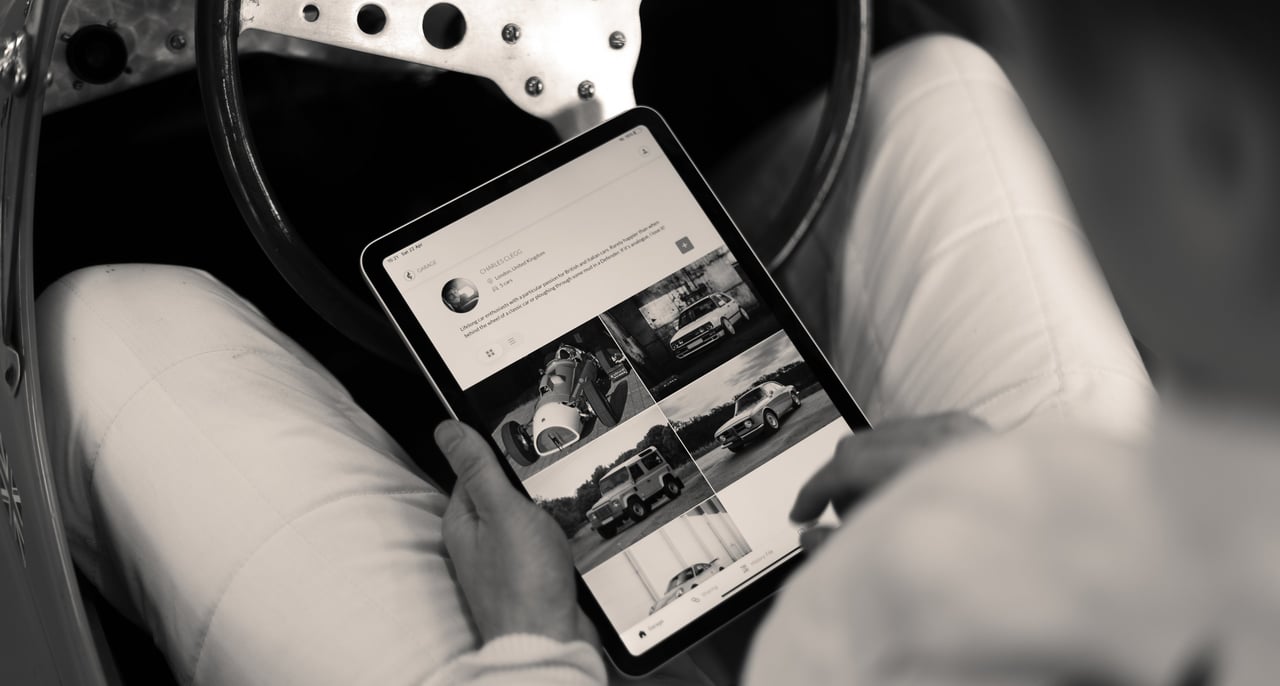
Charles: A key point is that there’s a generational shift in expectations. People expect there to be an app, they expect there to be a platform to help bring them into the community, but at the moment, most of the platforms are just marketplaces. It comes back to the desire and the enthusiasm of ownership and its detachment from the reality of owning these cars. I know so many people who’ve gone to an auction and bought some car on a whim. Then two months later, I hear them say, “ah it’s been a nightmare, X, Y, Z has broken” and they don’t know how to solve it. If we do our job right, we’ll be able to make it easier to have both the aspiration and the ownership experience, and make them both positive.
The enthusiasm in the community around cars has never been stronger. That’s on one side, and then the pains of ownership are on the other. We’re trying to close that gap, to make it more accessible to younger people and those who don’t have the experience of owning such vehicles. We’re trying to embolden and empower the community.
Photos by Jake Boreham and Alex Pay





























